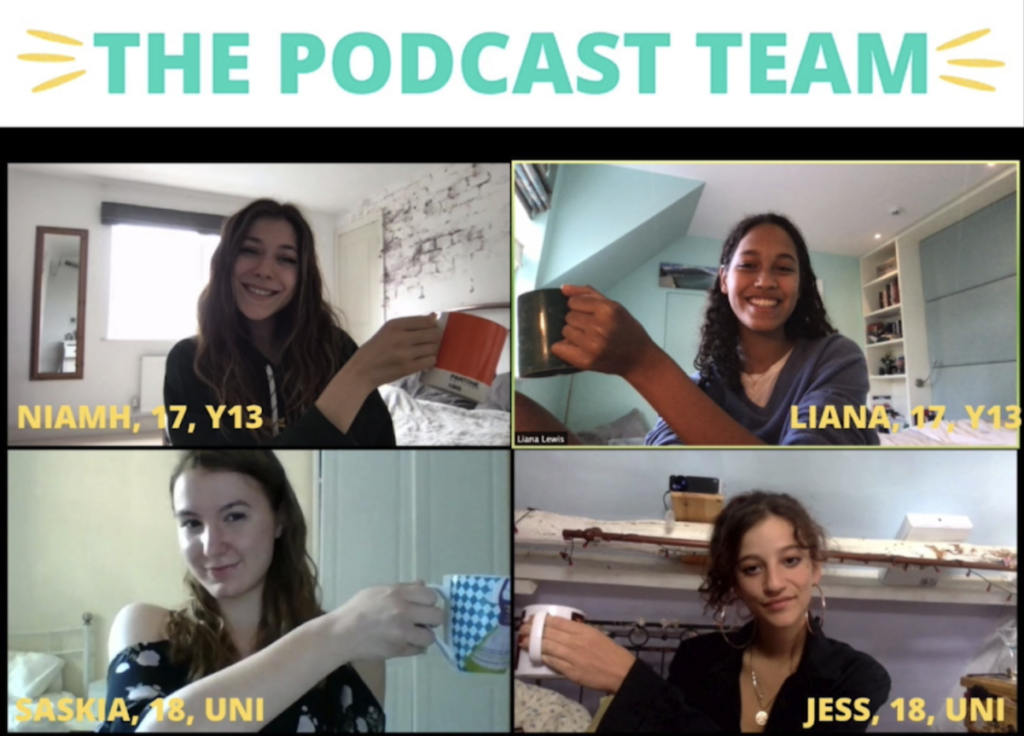
The case for earlier access to mental health support for young people is clear and well-evidenced: to prevent or relieve immediate distress and avoid the potential long-term psychosocial (and physical) impacts of untreated problems into adulthood (Department of Health, 2015). Recent estimates suggest that about 65% of young people with diagnosable mental health problems are not accessing treatment for mental health problems (Childrens Commissioner, 2021). Often the young people most in need of help are most reluctant, afraid or even unaware they need it (Evans et al. 2005; Rickwood et al. 2005). The COVID pandemic may further distort the picture but figures from July 2020 estimate that over 21% of young people aged 17 to 22 years with a probable, and almost 14% with a possible mental health disorder decided not to seek help (NHS Digital, 2020).
The process of help-seeking requires the capability, motivations and opportunities to express personal and psychological problems to an ‘other’ (Rickwood et al. 2005). This is a daunting prospect for most adults, but adolescents have a host of developmental and environmental complications to contend with in addition. Many factors have been cited as common barriers, including: poor psychological and emotional competencies; strong negative feelings, beliefs and fears; confidentiality and trust; autonomy; personal and public stigmas; anticipated negative consequences; societal or cultural pressures; and, poor accessibility or negative experiences of service provision (Gulliver et al. 2010; Radez et al. 2020).
Offering options that young people feel are trustworthy and alleviate these barriers are likely to facilitate their help-seeking journey and should form the basis of interventions (Radez et al. 2020).
This comprehensive research review (Velasco et al, 2020) aimed to provide:
- Up-to-date evidence on the barriers and facilitators to young people seeking help for common mental health problems across international studies
- Evaluate the landscape of help-seeking interventions targeting help-seeking for young people
- Examine age and sex differences.

Identifying and targeting the barriers and mechanisms of change for help seeking will help young people most in need of mental health support.
Methods
The authors conducted a systematic review of international studies identifying barriers and facilitators to help seeking and interventions for children and young people aged 10 to 19 years (including studies with >50% within this age range) (Velasco et al, 2020).
Searched studies focussed on help-seeking for common mental health problems that the authors felt shared a similar help-seeking process: depression, anxiety, suicidal ideation, emotional distress, and general symptoms of mental illness. Other mental health problems were excluded, such as psychosis, anorexia and substance misuse.
Studies of barriers/facilitators published after 2010 were included (previously reviewed by Gulliver et al. 2010), but there was no limit on publication year for intervention studies. The study was registered on PROSPERO and followed PRISMA guidelines. A search of grey literature was also included using the Open Grey database.
The authors assessed the quality of studies using the Mixed Methods Appraisal Tool or the Joanna Briggs Institute Critical Appraisal Checklist, to allow for variability in study designs. All studies meeting inclusion criteria were reported, regardless of quality, to provide a complete picture of the landscape and range of methodologies used. Themes were reported in a concise, narrative synthesis.
Some public and patient involvement was included in the protocol development through working with The McPin Foundation, but details of this work are not provided in the paper.
Results
Barriers and facilitators to help seeking
From 1,339 records identified by their search, the reviewers included 54 studies involving participants from 8-26 years old. Most of the studies were conducted in Australia (n=18) and the USA (n=12) and 5 in the UK.
| Barriers (from 46 studies; n=studies) | Facilitators (from 19 studies; n=studies) |
| Stigma alongside other negative individual attitudes (n=30) | Supportive, trusting relationships (parents, school teachers, GPs, counsellors)* |
| Family, cultural beliefs and prior experience of services (n=15) | Previous positive experience of help seeking and engagement with professionals* |
| Mental health literacy and knowledge around help-seeking (n=14) | Mental health literacy and knowledge of services (n=10) |
| Autonomy, self-reliance and fears around confidentiality (n=12) | Higher engagement with the community* |
| Availability and access to services and structural factors (cost, accessibility) (n=8) | *Number of studies not highlighted in text |
| Higher psychological distress: linked to lower help-seeking behaviour (n=6) |
Few studies identified significant age differences between younger and older adolescents. Of the 24 studies that explored sex differences, the authors report little evidence for convincing differences.
Overall, issues across studies relate to the absence of a common theoretical framework, heterogeneous designs and measurement and low methodological rigour; with only two studies considered high quality.
Importantly, only 7 of 53 studies included young people who were actively seeking/had sought help; the majority were based on help-seeking intentions in hypothetical scenarios.
Help-seeking interventions
Of 1,348 intervention studies identified, 36 studies met the inclusion criteria involving participants aged 11-19 years old. All were conducted in educational establishments in Australia (n=14), the USA (n=14), Canada (n=4) and only three from the UK.
Included studies followed quasi-experimental (n=21) or RCT (n=15) designs. Many studies were feasibility, pilot trials or protocols (n=16). Most studies were developed for non-clinical populations.
| Intervention (n = number of studies) | Effectiveness and outcomes |
| Psychoeducation to promote help-seeking behaviours (n=23) | Nine studies showed some positive effects |
| Outreach interventions to promote contact between those in distress with HCPs (n=3) | All three studies had a significant effect on intentions to seek help |
| Multimedia interventions including interactive tools and online platforms (n=6) | One study reported positive effects, one showed no effect |
| Peer training interventions (n=3) | Two studies described positive effects |
Again, the authors highlighted issues relating to the design and quality of included intervention studies, with heterogeneity of designs, outcome measures and reporting of follow-up periods preventing meaningful cross-study comparisons.

A total of 54 studies explored barriers and facilitators to help-seeking, while 36 studies described help-seeking interventions.
Conclusions
The authors summarise factors important to the help-seeking journeys of young people consistent with previous studies. The most prevalent barriers and facilitators were described:
…stigma and negative beliefs about mental health services appear as the most significant barriers to help-seeking for adolescents, whereas previous positive experiences and good mental health literacy are the most relevant facilitators.
The available evidence suggests that there are some promising findings for some help-seeking interventions, particularly those involving outreach interventions. Classroom-based psychoeducation approaches around depression and stigma were the most effective in prompting help-seeking.
Consolidating the findings they conclude:
There is also a need to develop shared definitions, theoretical frameworks and higher methodological standards in research regarding help-seeking behaviours in adolescents. This will allow more consistency and generalisability of findings, improving the development of help-seeking interventions and ensuring timely access to mental health treatments.

There is a need for shared definitions, a common theoretical framework, and robust methodology, to identify solutions relevant to the broader lives and spectrum of mental health difficulties faced by young people
Strengths and limitations
Overall, this review (Velasco et al, 2020) covers a lot of ground, cataloguing a broad range of youth mental health help-seeking studies. This research involved an inclusive search strategy following PRISMA guidelines to map the landscape of help-seeking studies and interventions. It was commendable that the authors included a search of grey literature (only Open Grey). This can serve to reduce publication bias and capture work not already included in mainstream publishing (such as theses, conference abstracts, third-sectors surveys and reports). More clarity on the objectives and search strategy for this aspect would be helpful since the number and scope of publications identified was low and appeared to include only theses and conference abstracts. Thus, perhaps the overall weighting leans more towards academic research. On the other hand, the inclusive approach would no doubt have helped to provide some balance.
The review could have offered more information relating to sex/gender in the tables even if differences were not explored in many studies since this was one of the objectives. Although it may not have been within the scope for this research, delving further into available demographic and cultural nuances of the barriers and facilitators across populations would also be useful.
As acknowledged by the authors, the review focuses on common mental health conditions in young people predominantly aged 11-19 years and therefore may not capture important barriers and facilitators for those with other, overlapping mental health problems or those outside of this age range. Including qualitative studies to offer young people’s perspectives as participants in the research is important and highlights some overlapping barriers and facilitators. While a strength of the research was the involvement of The McPin Foundation in reviewing an initial proposal of the research, further details on the motivations, level and approach to public involvement and the contribution this made would be valuable to researchers and public members involved in the research.

This review covers a broad range of youth mental health help-seeking studies, though could be improved by exploring in greater depth the impact of demographic and cultural impacts on this topic.
Implications for practice
Although a number of interventions are described, the review outlines the need for more robust research with longer follow-up. Thus, no clear evidence-based recommendations for practice can be provided.
This supports other studies in highlighting potential implications for further research:
- Need for a robust theoretical framework which can be used to assess mechanisms of change through interventions (Lester et al. 2020; Pretorius et al. 2019).
- Requirement for consistent methodological standards, aligned to valid and reliable tools or methodological approaches, to improve quality and generalisability of intervention design, with longer follow-up.
- Considering the broader psychosocial and cultural contexts of young people in help seeking research, including off- and on-line environments, service use and the role of different relationships (Lester et al. 2020; Pretorius et al. 2019).
- Inclusive involvement of young people in producing research to document their breadth of experiences, validate theoretical frameworks and provide a more nuanced view of sub-clinical and clinical populations if earlier access is the goal.

Though there are no direct clinical implications from this study, the review suggests several avenues for future research.
Involving young people in future help-seeking research
COVID-19 has impacted everyone’s lives and mental health to some degree, yet the lasting impact will arguably fall on the current generation of children and young people. Empowering and involving them in deciding what their post-pandemic lives and health should look like is starting to be realised (Pavarini et al. 2020, Wellcome, 2021). Inviting young people with diverse experiences to be heard and accepting their contextual wisdom in how they want to seek help will be the key to supporting their journey: When is the right time to get help? What does ‘early’ help and support need to look and feel like?
I recently completed an Emerging Minds Cross Sector Placement with the NSPCC and Childline, and a research project – Characterising Peer-support via the Childline On-line Message Boards (described below). This co-produced project highlights the capacity of young people to add valuable insights to this type of research, and reciprocal benefits to both parties given the right approaches and environment.
From the research, the significant ‘trusted’ role that third-sector organisations have in many young people’s lives became clear to me. Offering anonymous and confidential opportunities to be listened to and supported is a first step on the help-seeking journey for many young people. From my brief insights, I believe that the third sector have a wealth of experience and valuable information to contribute to our understanding of factors affecting the help-seeking journeys of these young people on- and off-line.

Help-seeking needs to be explored in broader contexts to be more inclusive of young people’s experiences and preferences beyond educational settings.
Characterising Peer-support via the Childline On-line Message Boards
During the 3-month Emerging Minds Cross-Sector Placement project with the NSPCC/Childline, I worked with a team of 10 young researchers (aged 14-18 years) from the NeurOX YPAG, who contributed over 130 hours on- and off-line, co-producing qualitative research to:
- Understand the psychological characteristics and role of on-line peer-peer interactions, via the Childline message boards, in supporting the help-seeking journeys of children and young people who have experienced emotional abuse and neglect;
- Explore methodology to investigate the role of peer-peer message board interactions and how these could relate to the process of help-seeking following the model developed by Rickwood et al. (2005);
- Inform the research and development of the Childline message boards.
For more information contact: vanessa.bennett@psych.ox.ac.uk
Information on involvement by young people.
Statement of interests
None known.
Links
Primary paper
Aguirre Velasco, A., Cruz, I. S. S. et al (2020). What are the barriers, facilitators and interventions targeting help-seeking behaviours for common mental health problems in adolescents? A systematic review. BMC Psychiatry 20(1) 293. doi:10.1186/s12888-020-02659-0
Other references
Childrens Commissioner, 2021. The state of children’s mental health services 2020/21: Technical report. Accessed 17th March 2021.
Department of Health, 2015. Future in mind: promoting, protecting and improving our children and young people’s mental health and wellbeing. Accessed 17th March, 2021.
Evans, E., Hawton, K., & Rodham, K. (2005) In what ways are adolescents who engage in self-harm or experience thoughts of self-harm different in terms of help-seeking, communication and coping strategies? J Adolesc 28(4) 573-587. doi:10.1016/j.adolescence.2004.11.001
Gulliver, A. G., KM.; Christensen, H. (2010) Perceived barriers and facilitators to mental health help-seeking in young people: a systematic reviev. BMC Psychiatry 2010 10 113.
Lester, S., Khatwa, M., & Sutcliffe, K. (2020). Service needs of young people affected by adverse childhood experiences (ACEs): A systematic review of UK qualitative evidence. Child Youth Serv Rev 2020 118 105429. doi:10.1016/j.childyouth.2020.105429
NHS Digital, 2020. Mental Health of children and young people in England, 2020. Accessed 17th March 2021.
Pavarini, G., Lyreskog, D., Manku, K. et al. (2020) Debate: Promoting capabilities for young people’s agency in the COVID-19 outbreak. Child Adolesc Ment Health 25(3) 187-188 doi:10.1111/camh.12409
Pretorius, C., Chambers, D., & Coyle, D. (2019) Young People’s Online Help-Seeking and Mental Health Difficulties: Systematic Narrative Review. J Med Internet Res 21(11) e13873. doi:10.2196/13873
Radez, J., Reardon, T., Creswell, et al. (2020). Why do children and adolescents (not) seek and access professional help for their mental health problems? A systematic review of quantitative and qualitative studies. Eur Child Adolesc Psychiatry. doi:10.1007/s00787-019-01469-4
Rickwood, D., Deane, F. P., Wilson, C. J., et al. (2005). Young people’s help-seeking for mental health problems. Australian e-Journal for the Advancement of Mental Health 4(3) 218-251. doi:10.5172/jamh.4.3.218
Wellcome, 2021. Expanding our vision for mental health: listening to young people and learning from Covid-19. Accessed 17th March 2021.
Photo credits
- Photo by Suad Kamardeen on Unsplash
- Photo by Giorgio Trovato on Unsplash
- Photo by Brett Jordan on Unsplash
- Photo by Shane Aldendorff on Unsplash
- Photo by kylie De Guia on Unsplash
- Photo by AbsolutVision on Unsplash
- Photo by MChe Lee on Unsplash

